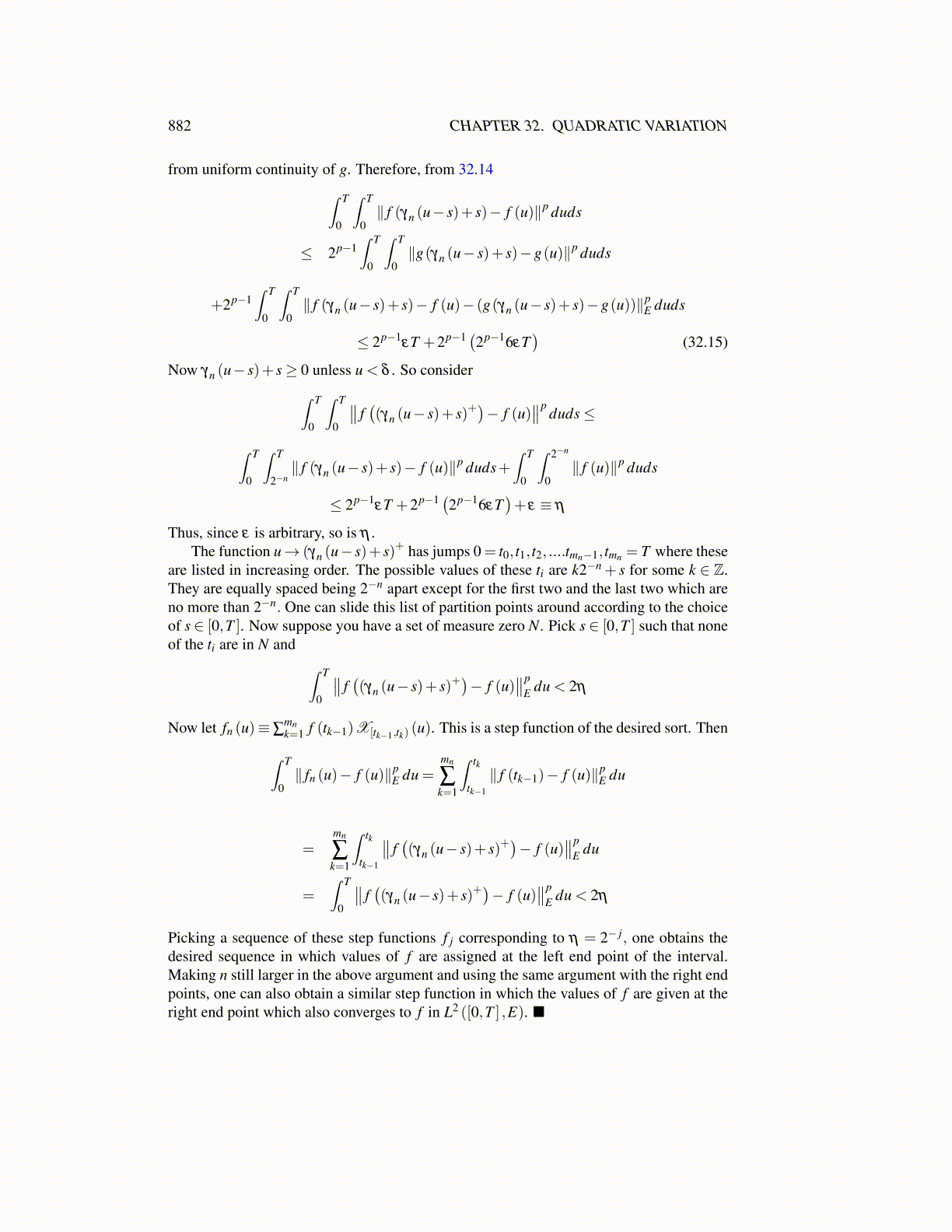
882 CHAPTER 32. QUADRATIC VARIATION
from uniform continuity of g. Therefore, from 32.14∫ T
0
∫ T
0∥ f (γn (u− s)+ s)− f (u)∥p duds
≤ 2p−1∫ T
0
∫ T
0∥g(γn (u− s)+ s)−g(u)∥p duds
+2p−1∫ T
0
∫ T
0∥ f (γn (u− s)+ s)− f (u)− (g(γn (u− s)+ s)−g(u))∥p
E duds
≤ 2p−1εT +2p−1 (2p−16εT
)(32.15)
Now γn (u− s)+ s≥ 0 unless u < δ . So consider∫ T
0
∫ T
0
∥∥ f((γn (u− s)+ s)+
)− f (u)
∥∥pduds≤
∫ T
0
∫ T
2−n∥ f (γn (u− s)+ s)− f (u)∥p duds+
∫ T
0
∫ 2−n
0∥ f (u)∥p duds
≤ 2p−1εT +2p−1 (2p−16εT
)+ ε ≡ η
Thus, since ε is arbitrary, so is η .The function u→ (γn (u− s)+ s)+ has jumps 0 = t0, t1, t2, ....tmn−1, tmn = T where these
are listed in increasing order. The possible values of these ti are k2−n + s for some k ∈ Z.They are equally spaced being 2−n apart except for the first two and the last two which areno more than 2−n. One can slide this list of partition points around according to the choiceof s ∈ [0,T ]. Now suppose you have a set of measure zero N. Pick s ∈ [0,T ] such that noneof the ti are in N and ∫ T
0
∥∥ f((γn (u− s)+ s)+
)− f (u)
∥∥pE du < 2η
Now let fn (u)≡∑mnk=1 f (tk−1)X[tk−1,tk) (u). This is a step function of the desired sort. Then
∫ T
0∥ fn (u)− f (u)∥p
E du =mn
∑k=1
∫ tk
tk−1
∥ f (tk−1)− f (u)∥pE du
=mn
∑k=1
∫ tk
tk−1
∥∥ f((γn (u− s)+ s)+
)− f (u)
∥∥pE du
=∫ T
0
∥∥ f((γn (u− s)+ s)+
)− f (u)
∥∥pE du < 2η
Picking a sequence of these step functions f j corresponding to η = 2− j, one obtains thedesired sequence in which values of f are assigned at the left end point of the interval.Making n still larger in the above argument and using the same argument with the right endpoints, one can also obtain a similar step function in which the values of f are given at theright end point which also converges to f in L2 ([0,T ] ,E). ■